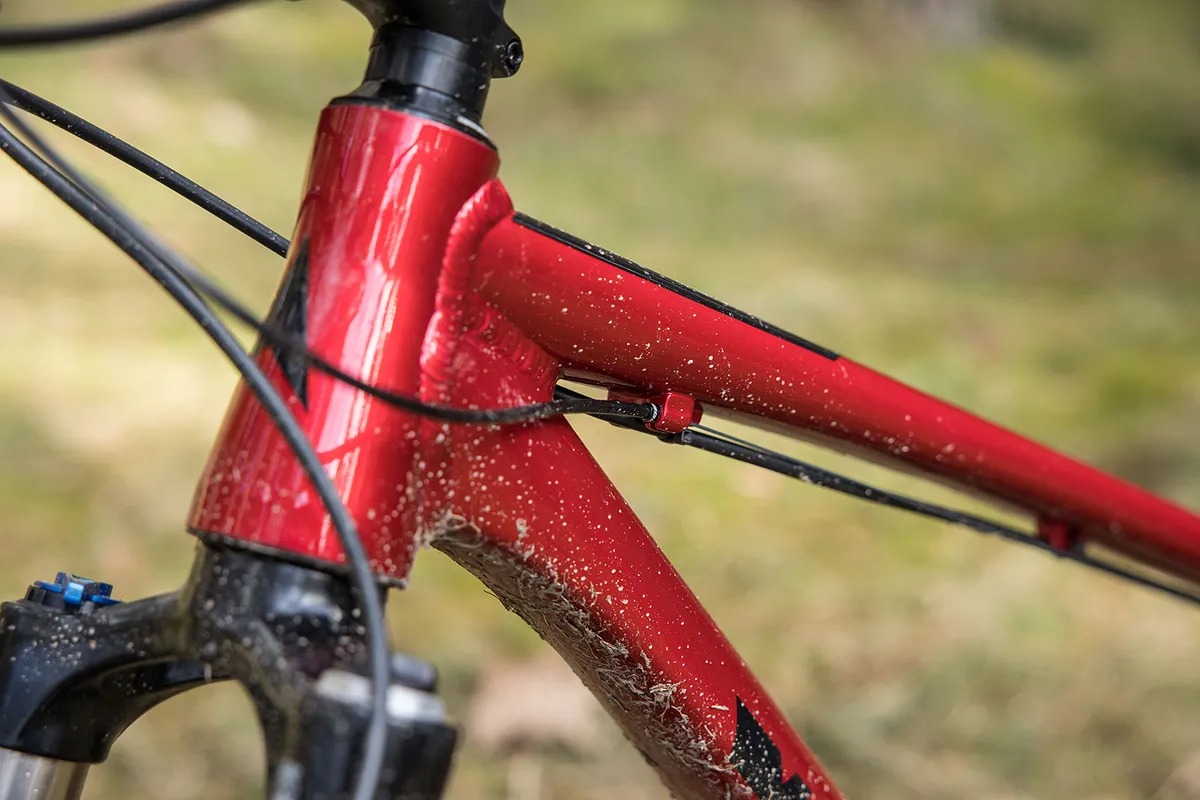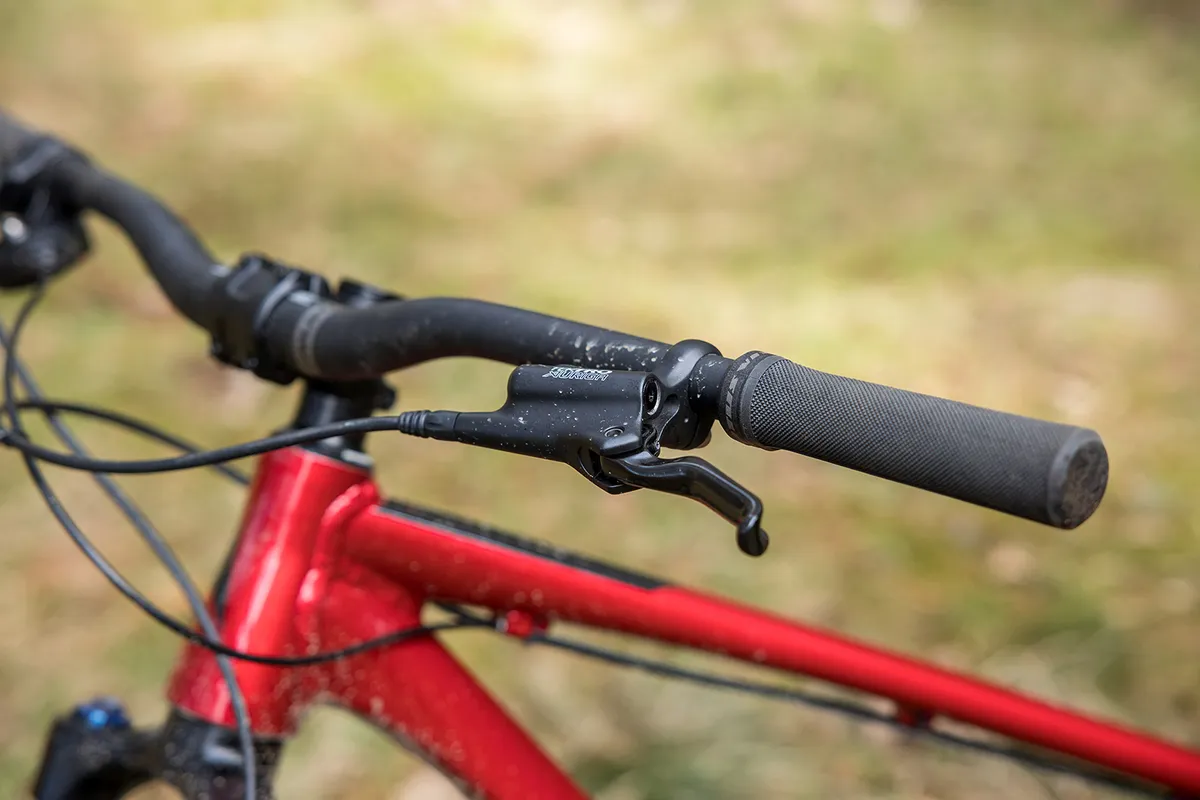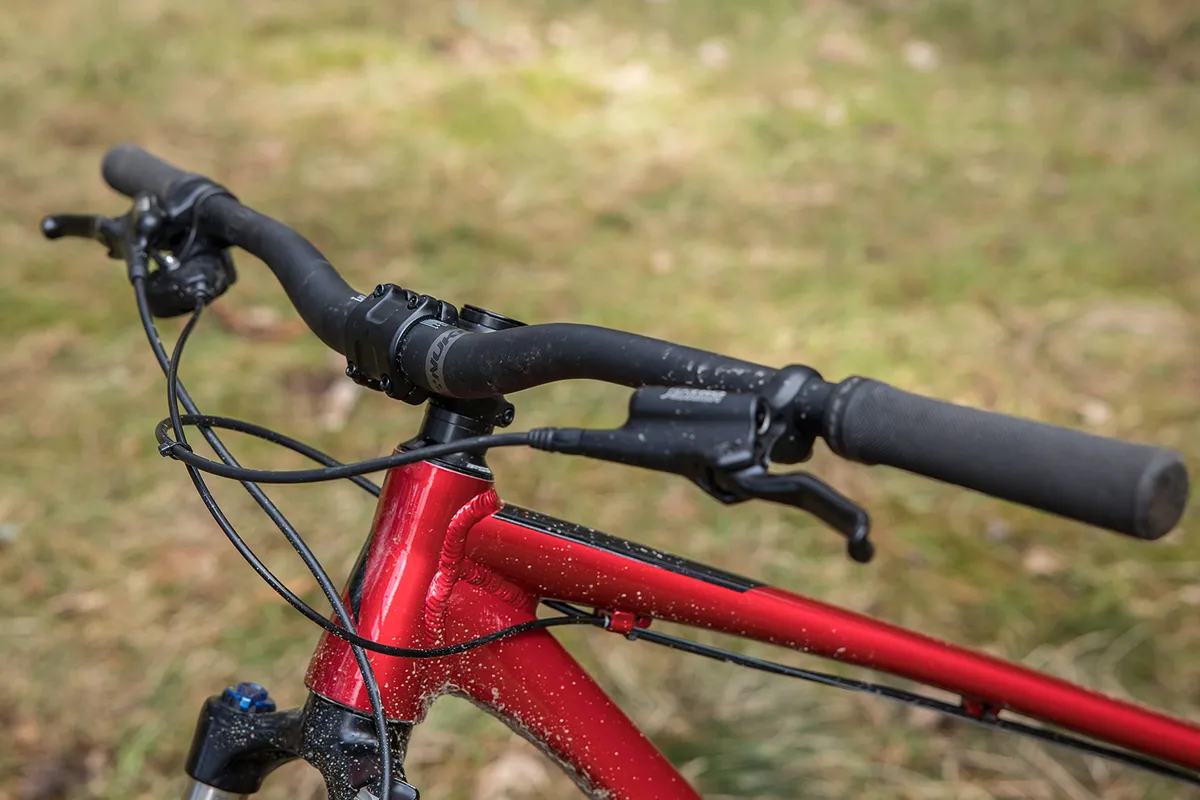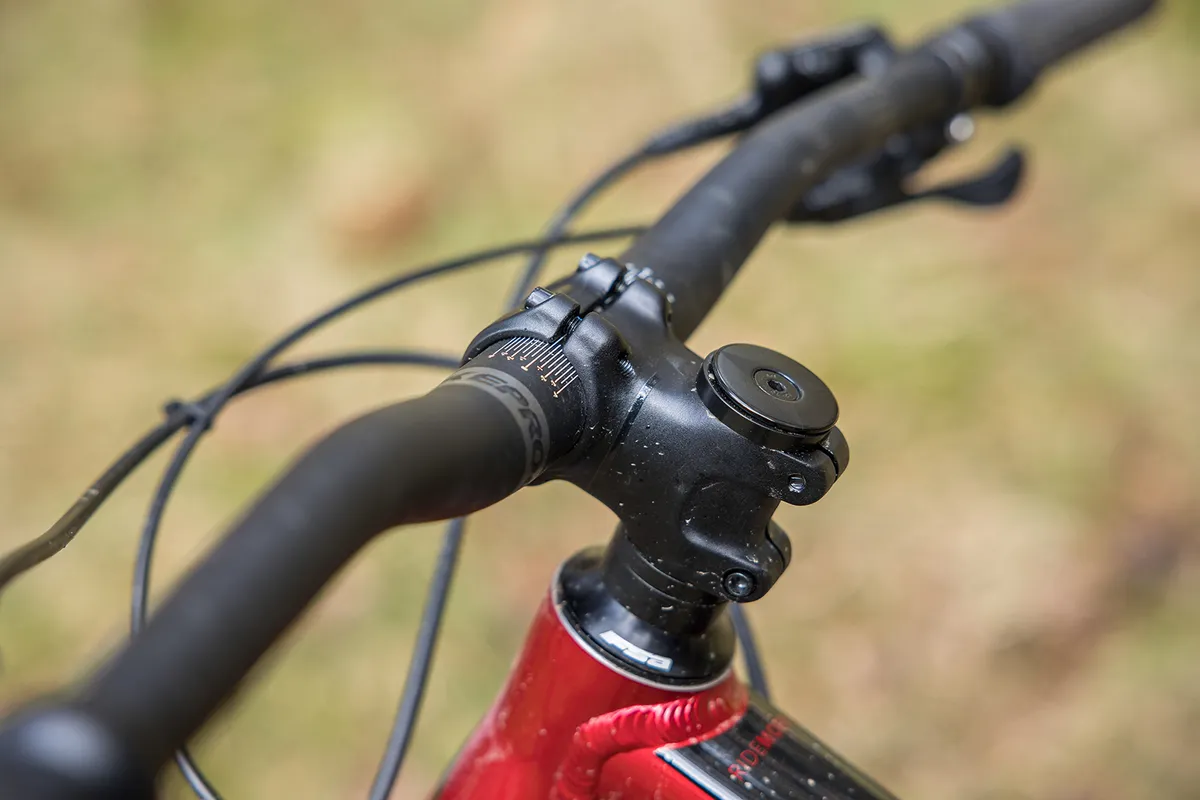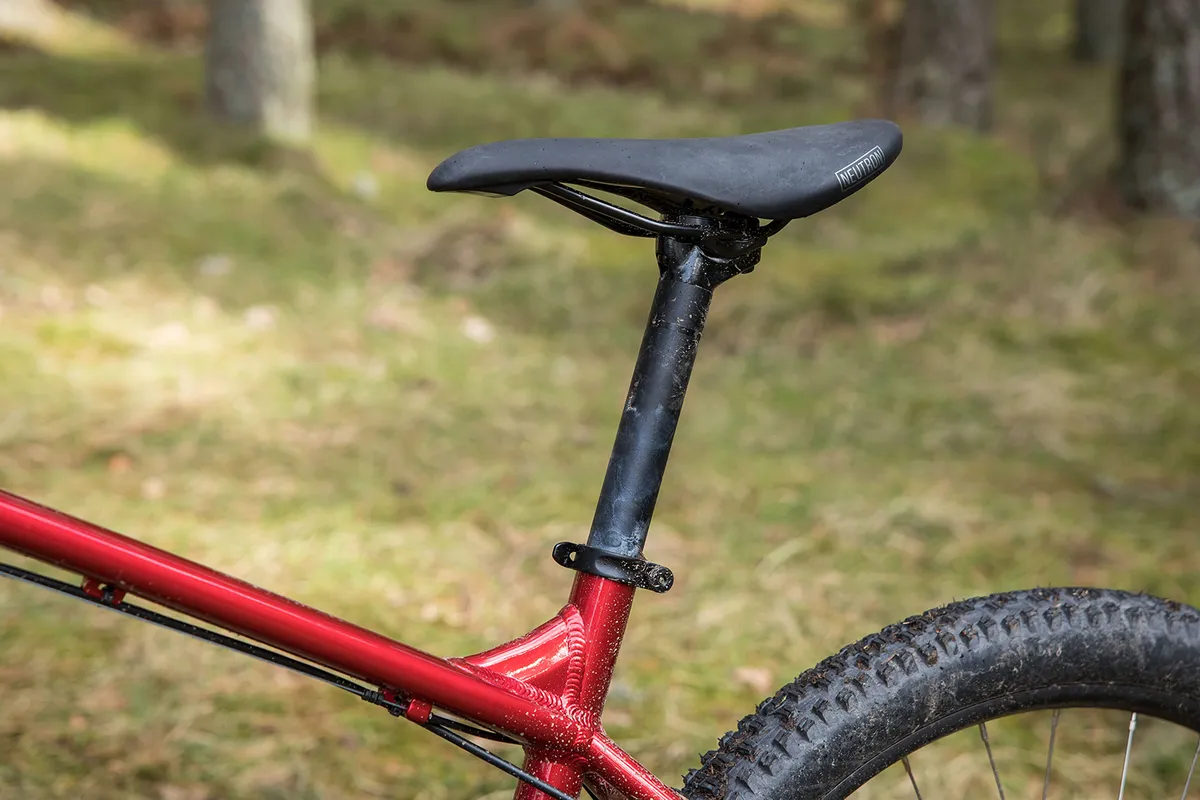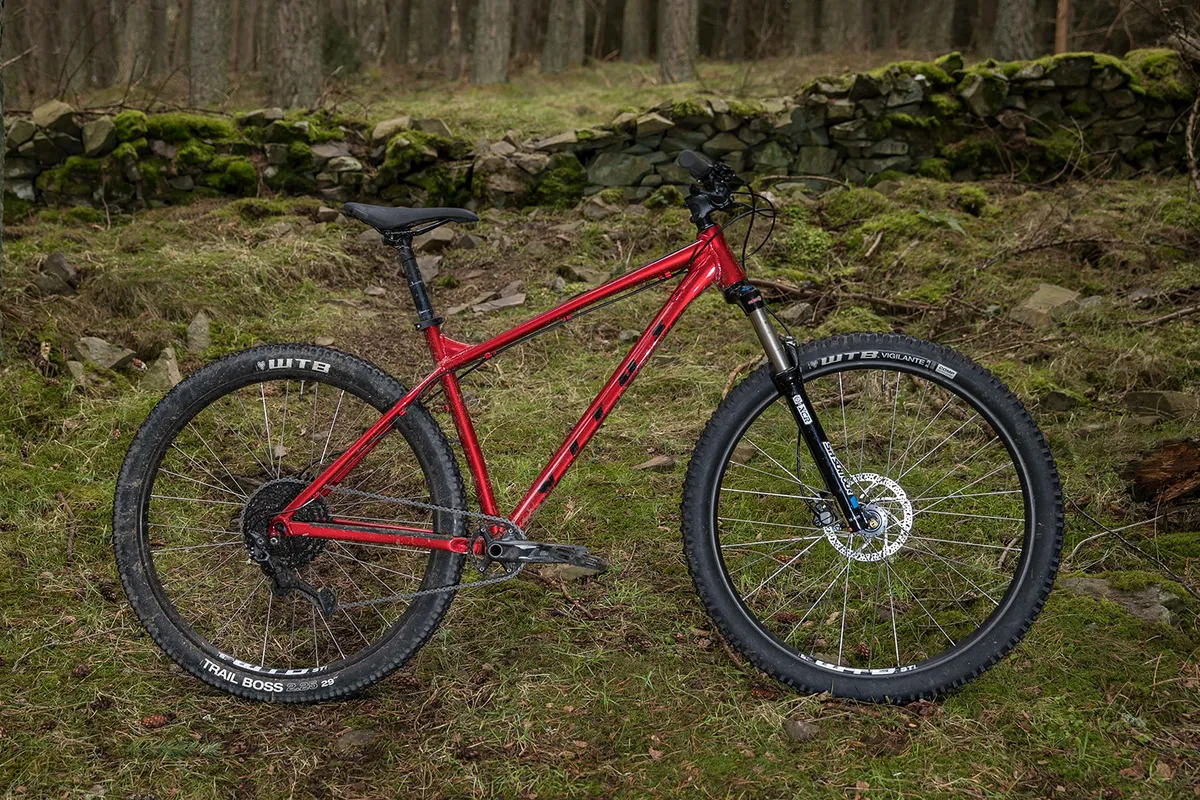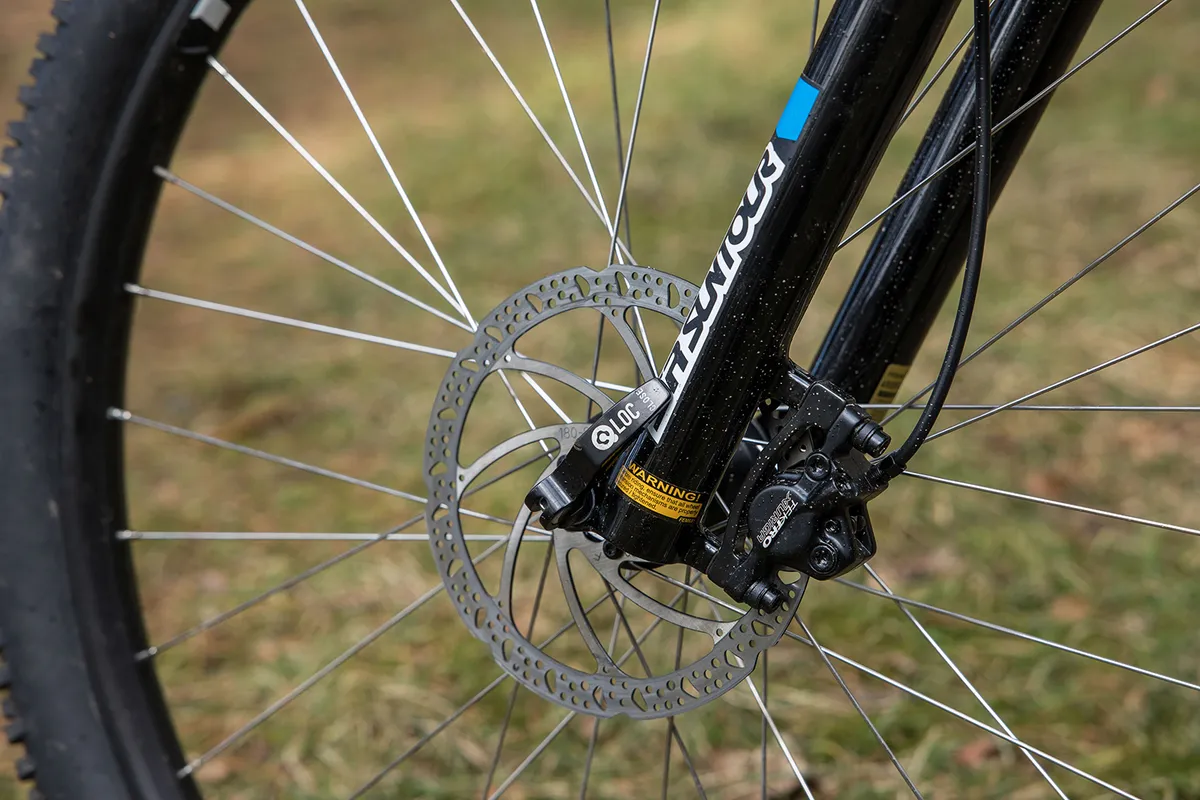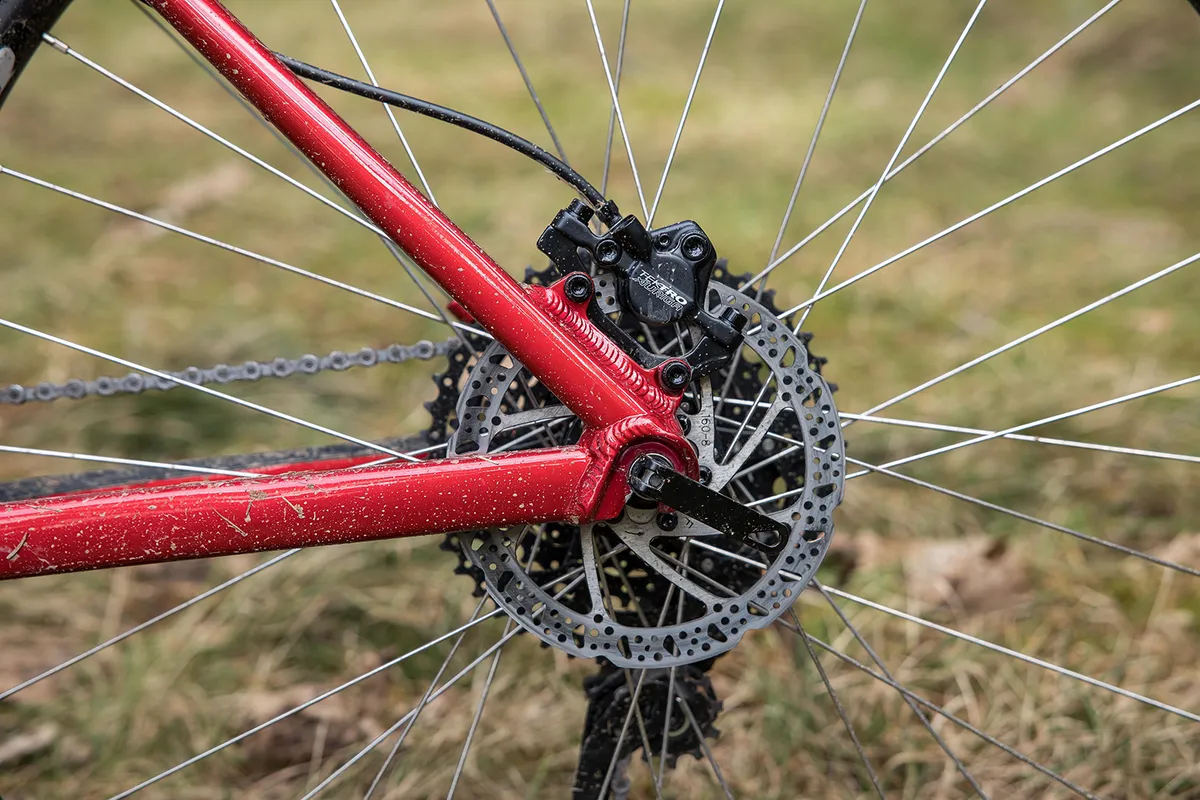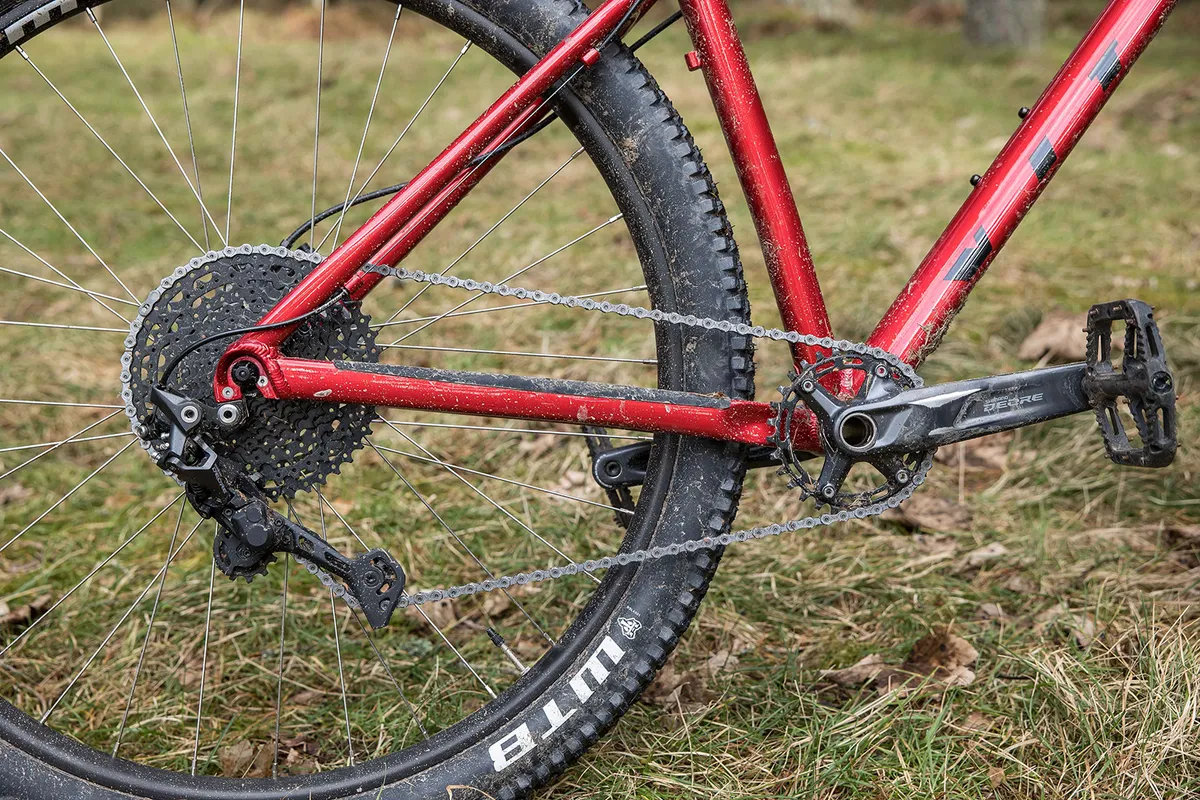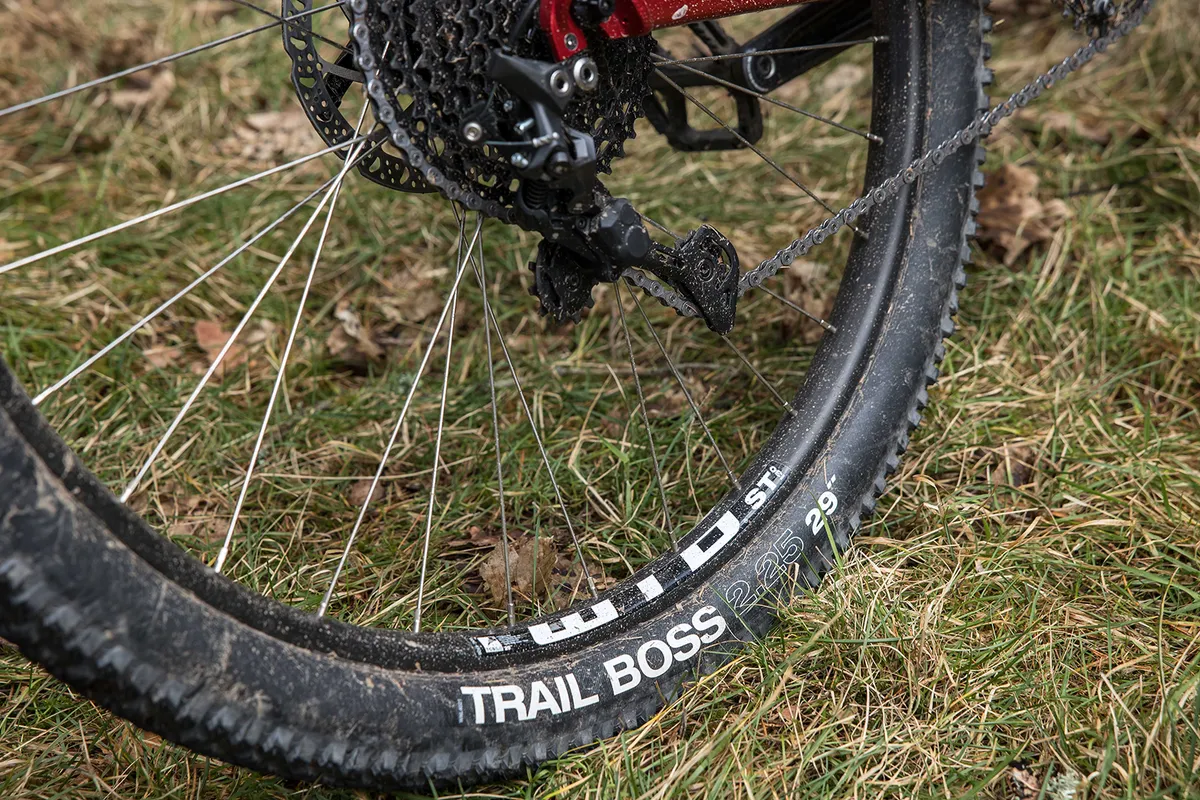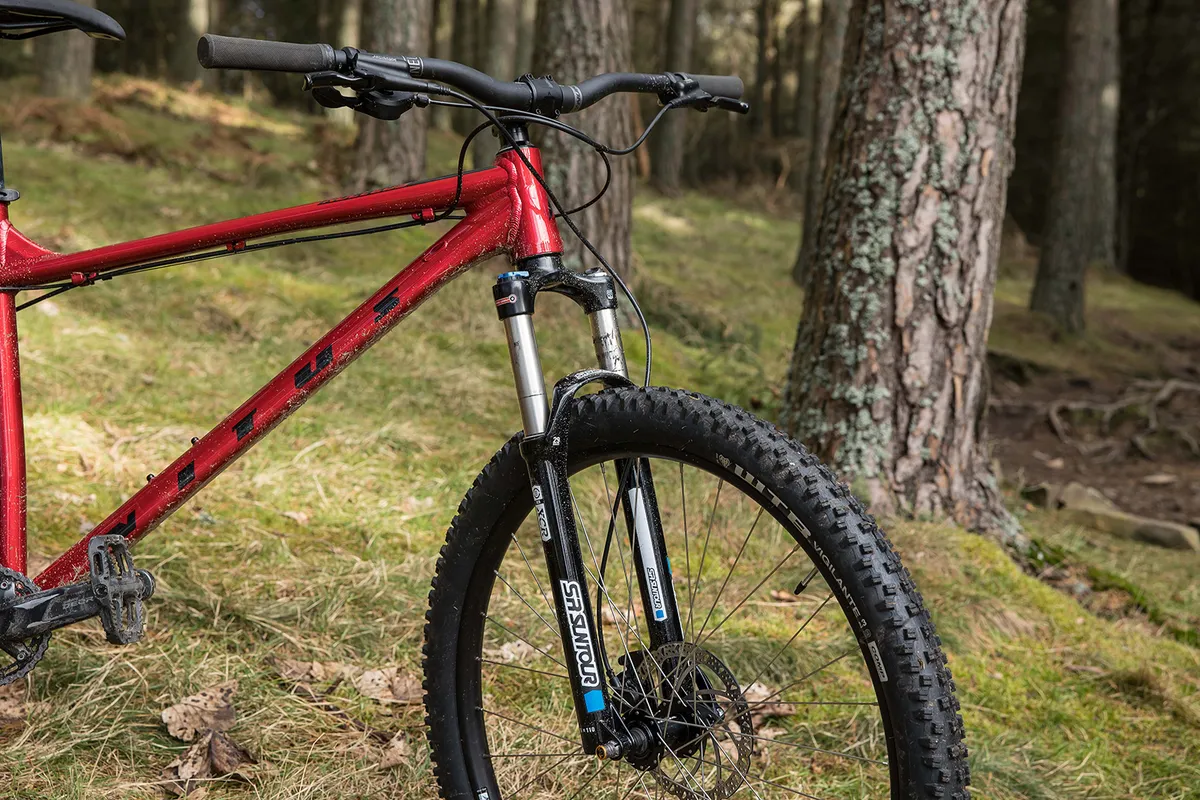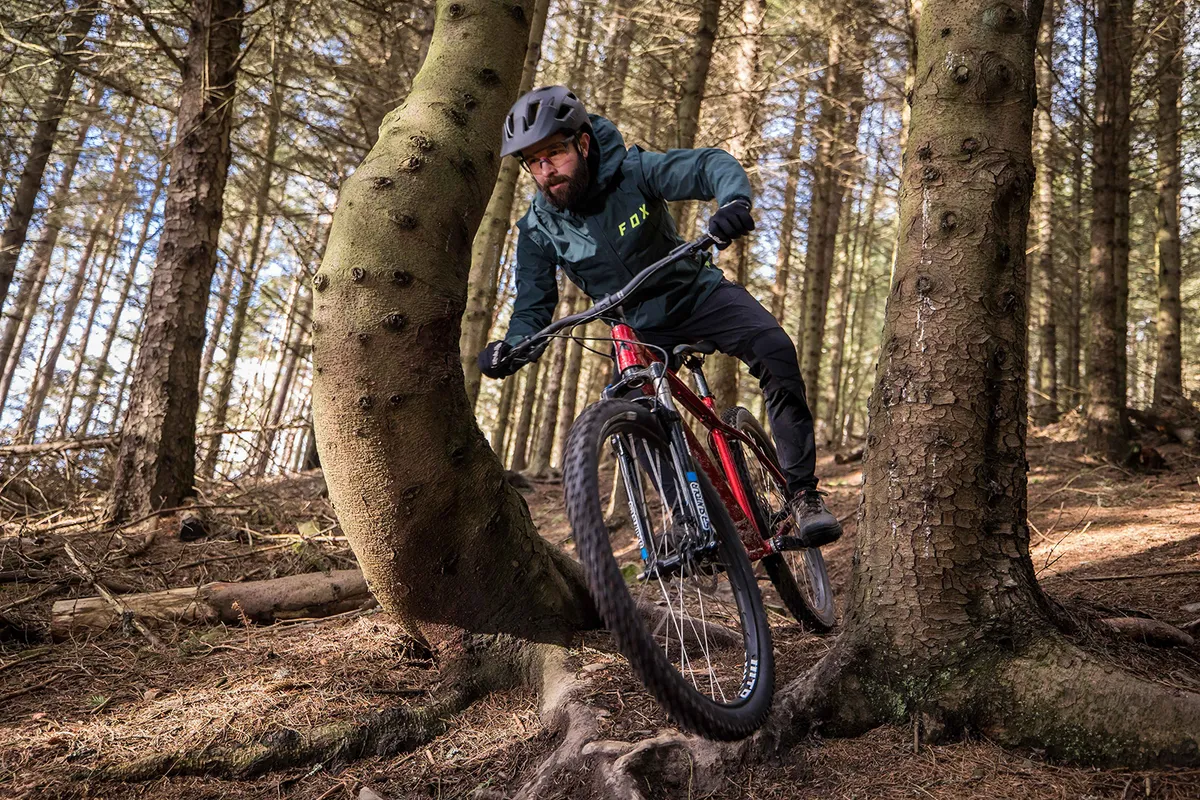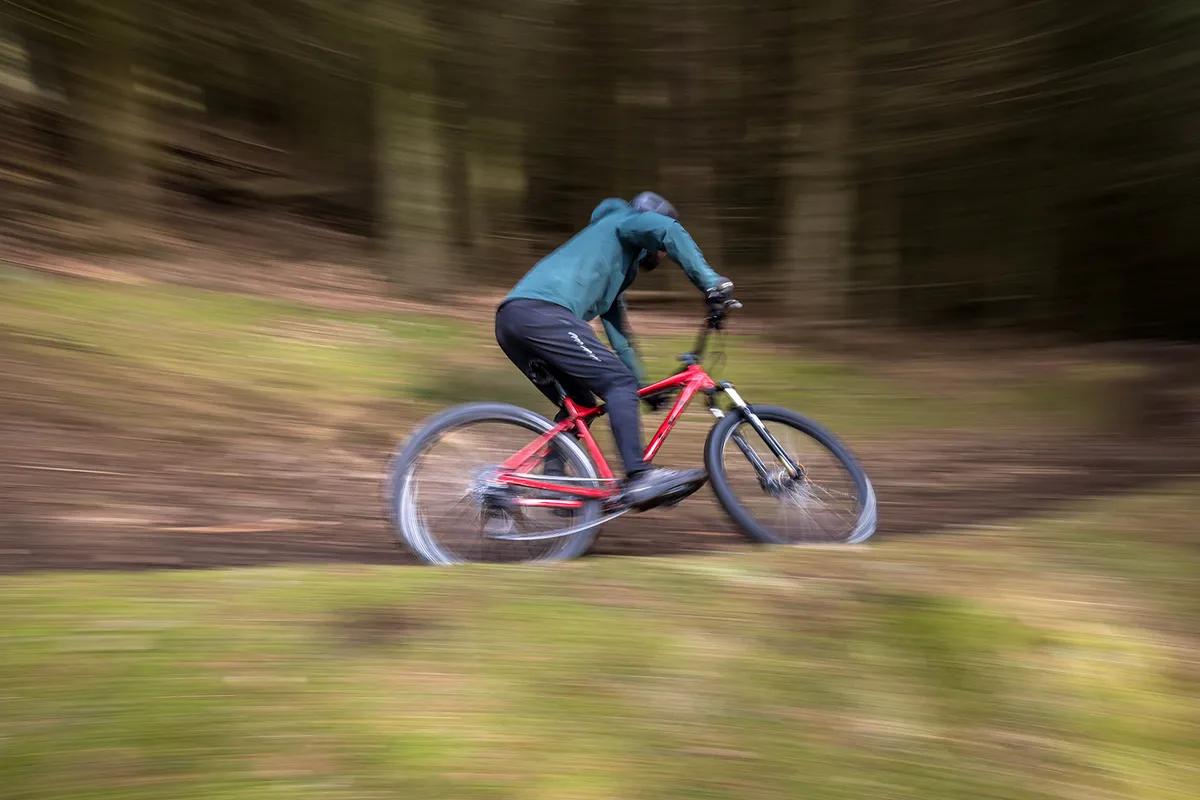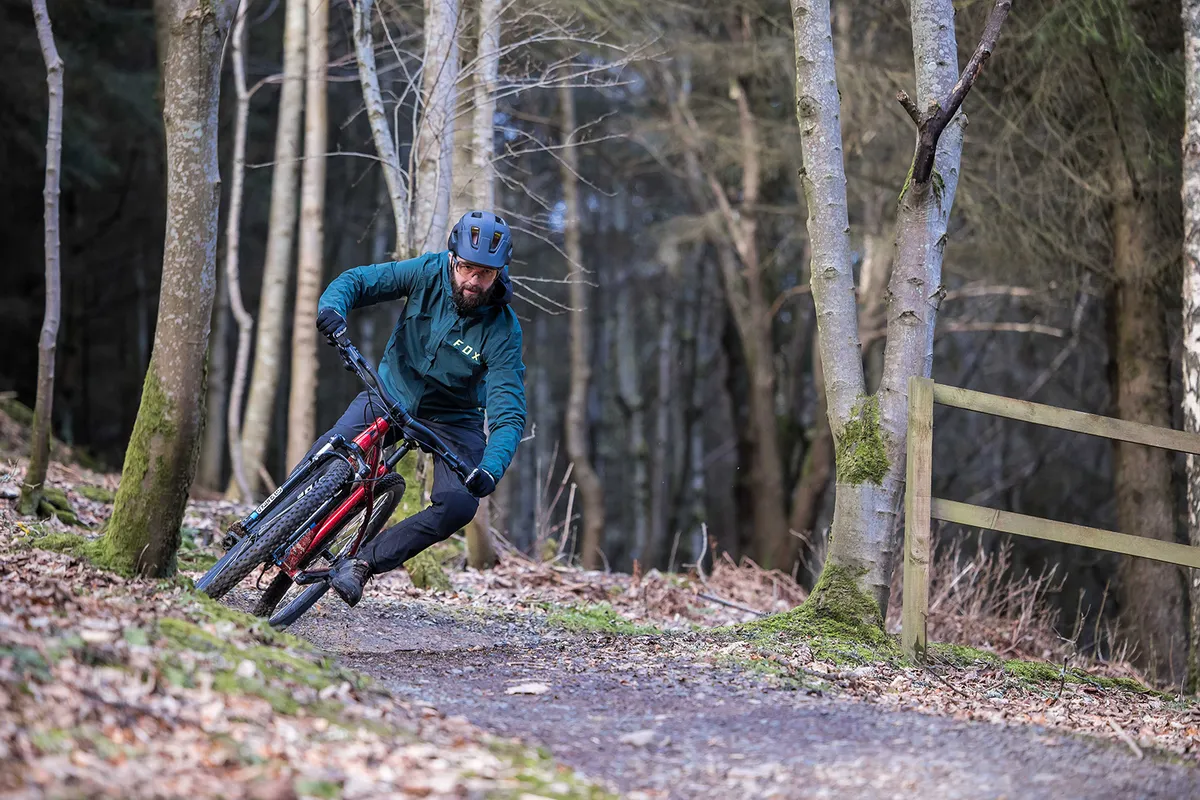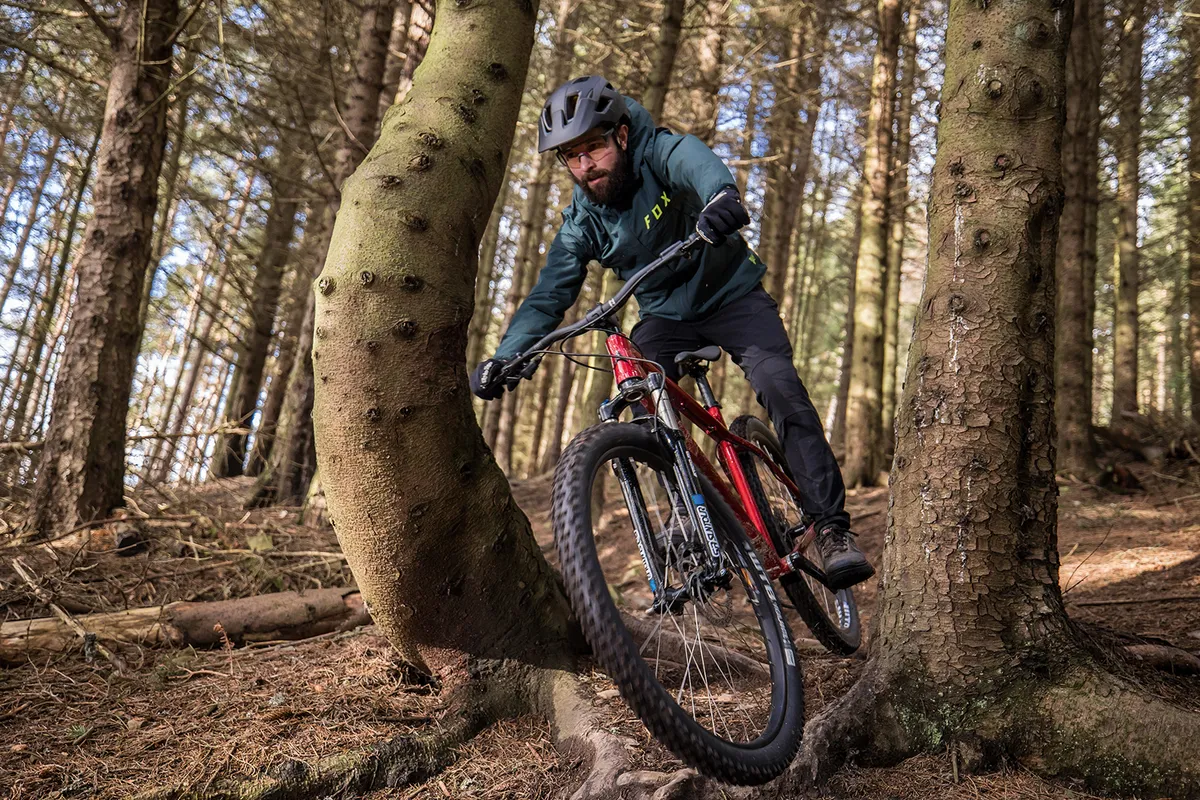As you’d expect from online giants Chain Reaction Cycles, the Nucleus 29 VRS from its in-house Vitus brand is well-specced, boasting a 1x10 Shimano Deore drivetrain, Tektro hydraulic disc brakes, WTB 29er rims and tyres, and ‘aggressive’ geometry for trail riding.
Vitus Nucleus 29 VRS frame
Built from lightweight and strong 6061-T6 aluminium, the Nucleus has a threaded bottom bracket (BB) and externally routed gear and brake cables for easy maintenance.
There’s no dropper post, almost inevitable at this price point, but there’s a cable port on the top of the down tube in case you want to add one later.
Rather than a modern, bolt-thru Boost rear axle, it uses a 9×135mm quick-release (QR), limiting wheel upgrade options. It has a set of bottle cage bosses and a neat chainstay protector.
This 29in-wheeled version comes in medium, large (here) or XL, or you can opt for 650b wheels (Nucleus 27), in which case there’s a small size, too.
Vitus Nucleus 29 VRS geometry
| | M | L | XL |
|---|---|---|---|
| Seat angle (degrees) | 73 | 73 | 73 |
| Head angle (degrees) | 67 | 67 | 67 |
| Chainstay (cm) | 43.9 | 43.9 | 43.9 |
| Seat tube (cm) | 43.2 | 48.3 | 52 |
| Top tube (cm) | 62 | 64 | 66.5 |
| Head tube (cm) | 11 | 12 | 13 |
| Bottom bracket drop (cm) | 6.15 | 6.15 | 6.15 |
| Wheelbase (mm) | 1,151 | 1,172.50 | 1,198.50 |
| Stack (cm) | 61.3 | 62.3 | 63.2 |
| Reach (cm) | 43.25 | 45 | 47.2 |
Vitus Nucleus 29 VRS kit
Backed by the immense buying power of Chain Reaction Cycles, it comes as no surprise to see plenty of branded parts bolted onto the Nucleus.
A 1×10 Shimano Deore-level mech, shifter and crankset are paired with an 11-46t SunRace cassette.
The 120mm-travel SR Suntour XCR32 fork uses an easily adjustable air spring, has a lockout lever and rebound damping dial, and sports a Boost thru-axle (15×110mm), allowing hassle-free fork or wheel upgrades.
The WTB ST i30 rims and Vigilante/Trail Boss tyres are tubeless-ready. Vitus and Nukeproof provide decent finishing kit, although i found the saddle’s convex shape wasn’t the most comfortable because it puts pressure on soft tissue.
Vitus Nucleus 29 VRS ride impressions
The Nucleus proved to be particularly stiff-feeling on both descents and ascents – bumps and vibrations reverberated through the rear end and into my feet when standing, and through the saddle when seated.
On climbs, this is most apparent over rough, high-speed, trail-centre style terrain, where the bike struggles to smooth-over small bumps, instead creating buzz and fatigue. At slower speeds this is less of an issue.
On descents, this stiffness reduces traction, making the ride skittish at times, especially when there are multiple, successive small bumps such as rocks or roots.
Despite the frame’s stiffness, the WTB tyres do their best to dig into the terrain, particularly the chunky-knobbed Vigilante up front, which has good cornering grip.
Both this and the Trail Boss at the rear are fast-rolling and well-suited to surfaced trails, but less adept in mud and on natural terrain.
The harsh feel of the rear end is compounded by the fork’s lack of small-bump sensitivity. Increasing sag slightly helps (easily done by letting a little air out of the spring), but there’s way too much rebound damping – even with the dial left in the fully open position – and stiction, severely reducing the fork’s ability to absorb trail chatter.
The Nucleus’s geometry has a cross-country (XC) bias, with the handlebar positioned a lot lower relative to the saddle than on a modern trail bike.
This helps keep the front wheel planted on the ground for seated climbing, but means that, despite the longish top tube (640mm), the average length 450mm reach feels shorter than it is. When standing up pedalling, I found myself a long way over the front of the bike, which contributed to some wheelspin on steep inclines.
Heading downhill, the XC geometry and short-feeling reach had me standing very close to the handlebar, leading to handling that was on the snappier side of playful.
As soon as I picked up speed, care and experience was needed to keep the bike under full control, despite its fairly slack 67-degree head angle.
The bottom bracket sits a lofty 327mm off the ground, so it requires plenty of commitment to lean the bike over in flatter turns. This creates a slightly ‘perched’ feeling that makes it tricky to flow between sections.
On very steep climbs, there are enough gears for a reasonably fit rider but, despite the small 30t chainring up front, a beginner might struggle. I have no complaints about shifting performance and the chain never dropped, even tackling very rough terrain.
Despite the bike’s relatively short reach, the Nukeproof bar’s 780mm width created a confident elbows-out position. The Tektro brakes, however, lacked power and felt especially wooden. Shimano’s MT200s, as specced on Carrera's Fury and Cannondale's Trail SE 4, are much better for the money.
Vitus Nucleus 29 VRS bottom line
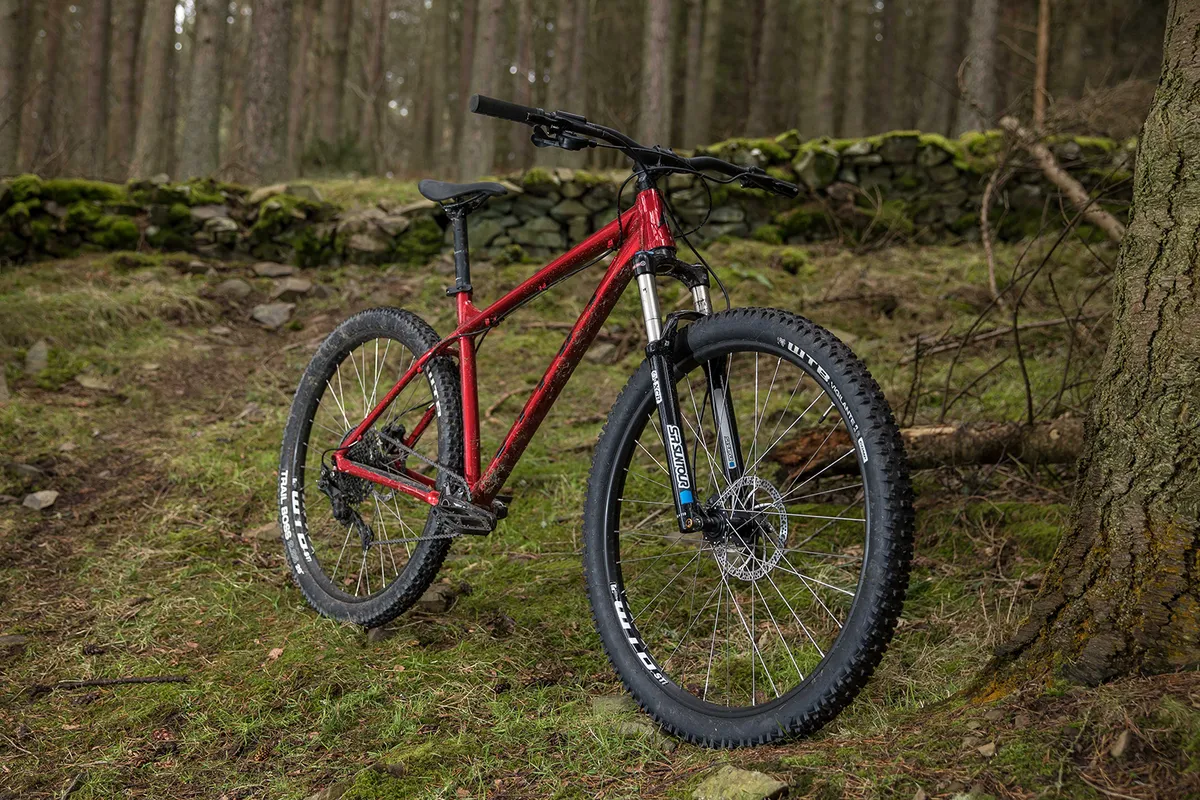
While it looked almost perfect, the Nucleus suffers from some compromising geometry choices. The spec is pretty good, especially the drivetrain, but the fork and brakes let it down. If you can afford it, step up to the Vitus Sentier instead.
How we tested
Bike brands are forever striving to offer the most performance and best value they can. While the pandemic and Brexit are clearly having a negative impact on prices, today’s sub-£1k bikes appear to represent a big leap forwards in terms of both parts and geometry, compared to their three- or four-year-old couterparts.
If these improvements translate to better performance on the trail, it’s great news for buyers on a budget.
We tested our four hardtails on a mix of the trails they’re most likely to be ridden on, ranging from fireroads and bridleways through to more technical trail-centre loops and singletrack, to find out exactly where they excel and where their limits are.
Also on test
Product
| Brand | vitus |
| Price | 1300.00 AUD,1050.00 EUR,750.00 GBP,900.00 USD |
| Weight | 14.1400, KILOGRAM (L) - |
Features
| Fork | SR Suntour XCR32 air, 120mm (4.7in) travel |
| br_stem | Vitus, 50mm |
| br_chain | KMC X10 |
| br_frame | 6061-T6 aluminium alloy |
| Tyres | WTB Vigilante Comp High Grip 29x2.3in (f), WTB Trail Boss Comp 29x2.25in (r) |
| br_brakes | Tektro M290, 180/160mm rotors |
| br_cranks | Shimano Deore M5100, 30t |
| br_saddle | Nukeproof Neutron |
| br_wheels | WTB ST i30 alloy rims on Vitus KT K68 hubs |
| br_headset | FSA |
| br_shifter | Shimano Deore M4100 |
| br_cassette | SunRace, 11-46t |
| br_seatpost | Vitus rigid |
| br_gripsTape | Vitus lock-on |
| br_handlebar | Nukeproof Neutron V2, 780mm |
| br_bottomBracket | Shimano BB52 |
| br_availableSizes | S, M, L, XL |
| br_rearDerailleur | Shimano Deore M5120 (1x10) |
